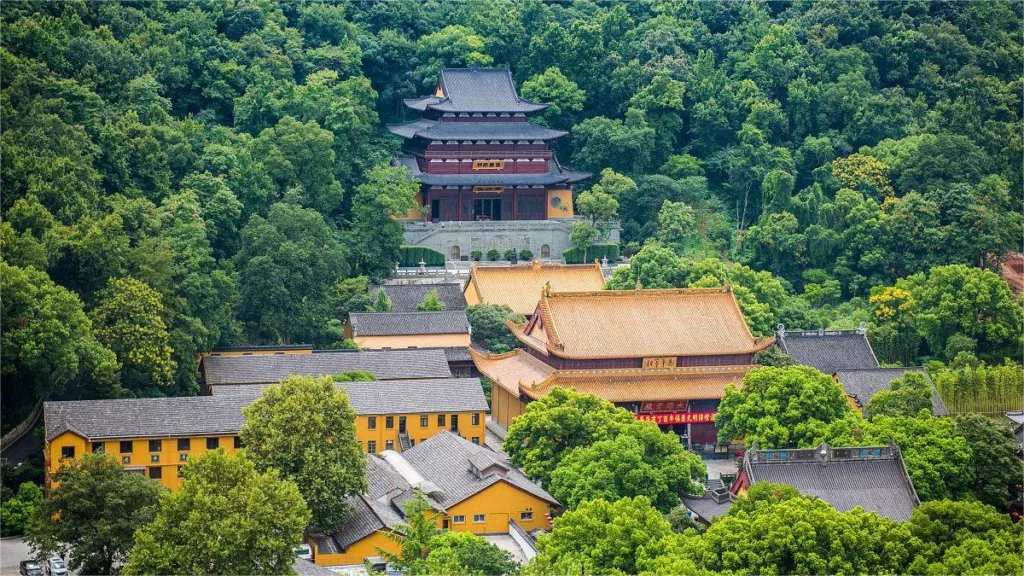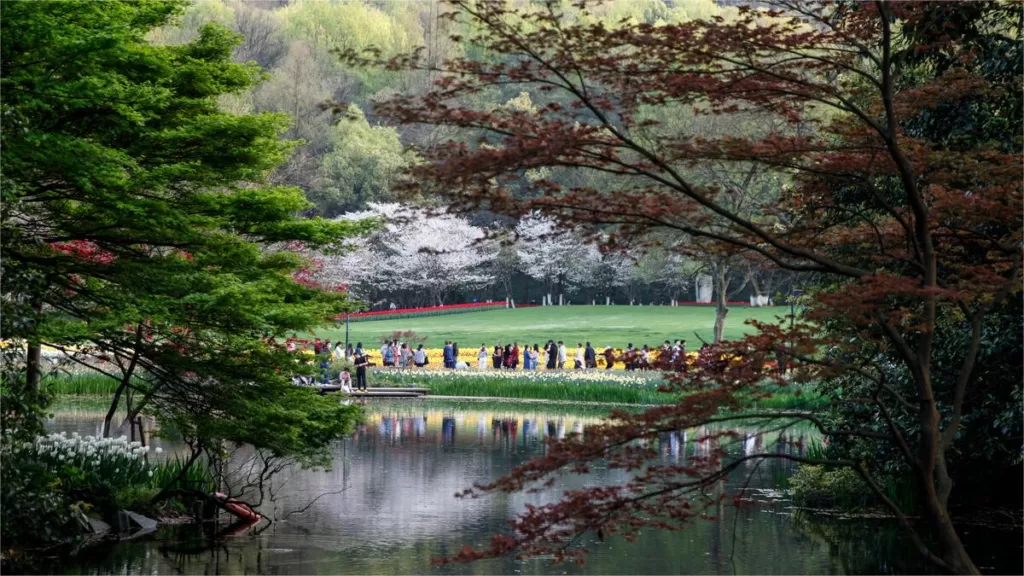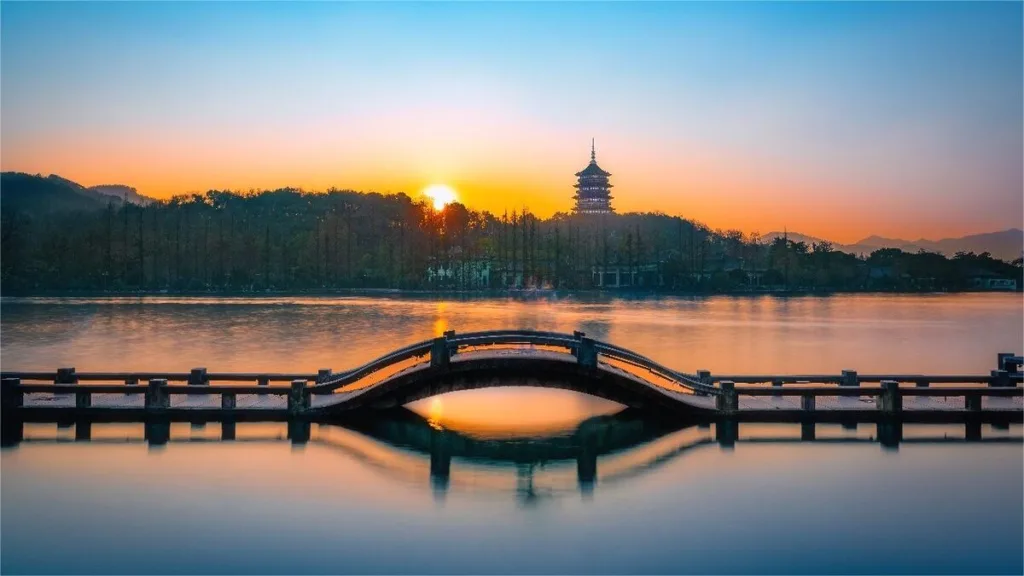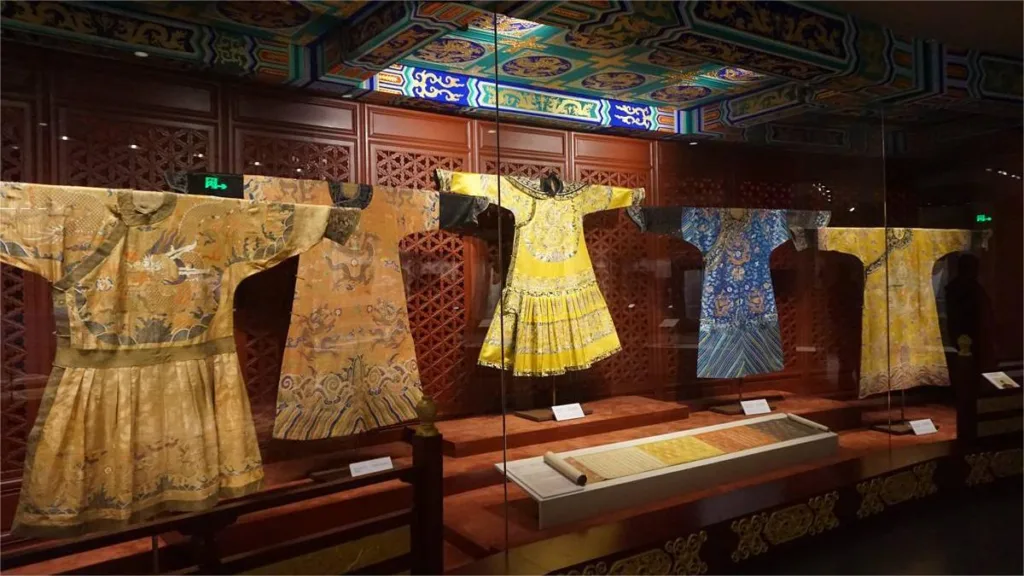Jingci Temple (净慈寺), located in the vicinity of West Lake in Hangzhou, is one of the four ancient temples with a rich historical legacy in the area and is renowned as one of China’s notable Buddhist temples. Its fame echoes through time due to the resonant tolls of its bells, earning the appellation “Evening Bell at Nanping” and securing its place as one of the “Ten Scenes of West Lake.”
Situated beneath the Huirifeng Peak of Nanping Mountain in Hangzhou, Jingci Temple was originally established in 954 AD during the Wu Yue Kingdom of the Five Dynasties by Qian Hongchu to honor the eminent monk Yongming. Initially named Yongming Zen Monastery, it was later renamed Jingci Temple during the Southern Song Dynasty, during which the Hall of Five Hundred Arhats was constructed.
Despite facing destruction and subsequent reconstruction throughout its history, Jingci Temple stands today with its various structures, including the main hall, mountain gate, bell tower, rear hall, ancient wood-pumping well, and the Jigong Hall, all meticulously rebuilt in the 1980s. The grandeur of the temple is epitomized by the single-story, double-eaved Mahavira Hall, adorned with yellow-glazed tiles, exuding solemnity and magnificence.
A particular highlight of Jingci Temple is the colossal bronze bell, weighing over ten thousand kilograms, cast with excerpts from the “Lotus Sutra” transcribed by notable figures like Zhao Puchu. Its toll resonates every dusk over the tranquil expanse of West Lake, inspiring contemplation and stirring boundless reflections among visitors and locals alike.
Table of Contents
- Basic Information
- Location and Transportation
- Highlights of Jingci Temple
- Vlog about Jingci Temple
- Attractions near Jingci Temple
Basic Information
| Estimated Length of Tour | 2 hours |
| Ticket Price | 15 RMB |
| Opening Hours | 7.00 – 17.00; Last admission: 16.45 |
| Telephone Number | 0086-0571-87995600 |
Location and Transportation
Jingci Temple is situated on the southern shore of West Lake in Hangzhou, directly across from the iconic Leifeng Pagoda. Its precise location is at 56 Nanshan Road, Xihu District, Hangzhou, Zhejiang Province, China. To get there, you can take bus 4, 31, 315, 1314, or Xihu Lake Outer Ring Line and get off at Jingsi Stop (静寺站).
Highlights of Jingci Temple
Lianhua Cave (Lotus Flower Cave)

At the foothills of Nanping Mountain lies the Lianhua Cave, an ethereal enclave renowned for its breathtaking natural beauty. With its open dome and stalactites resembling delicate petals, it evokes the image of a colossal lotus blossom. Legend has it that Master Yongming once recited the “Lotus Sutra” here, attracting celestial maidens who scattered flowers from the heavens, hence the name Lianhua Cave, also known as Yuhua Terrace (Flower Rain Terrace). Adjacent to the cave stands the ancient “Juranting Pavilion,” historically frequented by scholars and poets for contemplation and verse. Over time, the pavilion gave way to bamboo groves, adding to the area’s tranquil allure. Rising above the cave, the Shao Lin Yan (Shao Lin Rock) bears the inscription of “Shaolin (少林),” attributed to Master Shaolin Miaosong, a prominent monk of the Southern Song Dynasty who frequently meditated here. To the right of Lianhua Cave lies the Stone Buddha Cave, where two towering stone formations resemble a Buddhist shrine, housing three carved stone Buddha statues within.
Nanping Evening Bell

Adjacent to the entrance of Jingci Temple stands the “Nanping Evening Bell” monument, commemorating one of Hangzhou’s famed “Ten Scenes of West Lake” – the resonant tolling of the Nanping Evening Bell. Revered for its melodic resonance, the temple’s bells have echoed through history, with the Ming Dynasty (1368-1398) commissioning a colossal bell weighing approximately 10,000 kilograms. As dusk descends over the verdant mountains, the tranquil echoes of the bell reverberate through the azure sky, casting a spellbinding aura over the surroundings. It is said that the vibrations of the bell reverberating against the rocky landscape amplify its resonance, reaching ears as far as ten miles away. Recognizing its unparalleled beauty, Emperor Kangxi included the Nanping Evening Bell among the West Lake’s most esteemed sights, leading to the erection of the commemorative monument outside Jingci Temple.
Temple Complex

Founded during the Five Dynasties period, Jingci Temple stands amidst a cluster of Buddhist sanctuaries, forming a sacred enclave within Hangzhou. Testament to the devout patronage of successive rulers, the temple complex flourished alongside its neighboring monasteries, encompassing a vast expanse of spiritual sanctuaries. From the Xiaozhaoqing Temple beneath the Leifeng Pagoda to the Huizhao Temple to the west and the Ruixiang Monastery to the north, each edifice contributes to the grand tapestry of religious devotion. The resonant chants of morning prayers and evening rituals intertwine, creating an atmosphere reminiscent of a divine realm, earning Nanping Mountain the moniker “Mountain of Buddhist Realms.”







